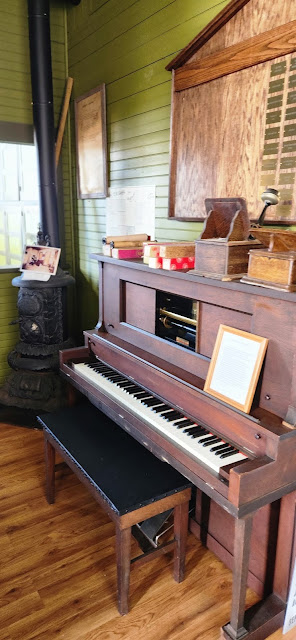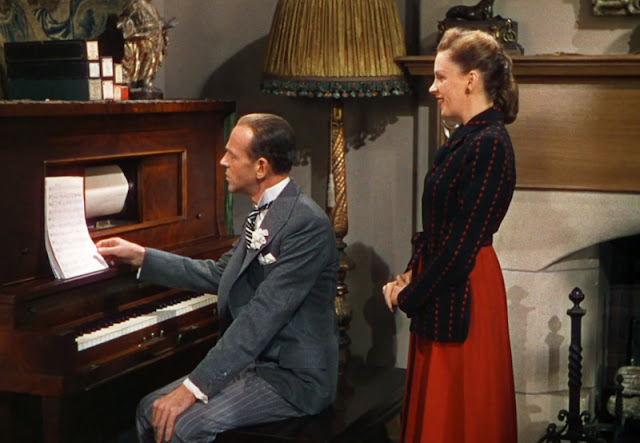 | |||
| World Piano Day is celebrated on the 88th day of the year, which is the same as the number of keys on the piano |
I have a passion for the piano, though I must admit I mostly enjoy playing around with the keys whenever I get the chance. To celebrate this day, I want to highlight a special type of piano featured in several classic films: the player piano, also known as the pianola. My first encounter with one was in Irving Berlin's 1948 movie, Easter Parade.
 |
| Fred Astaire & Judy Garland performing 'I Love the Piano" in Easter Parade (1948). |
%20_%20-%20www.youtube.com.png)
%20_%20-%20www.youtube.com.png)
I also recall seeing a player piano in and Harold and Maude (1971).
 |
| Well, if you want to sing out, sing out And if you want to be free, be free 'Cause there's a million things to be You know that there are |
 |
| Maude (Ruth Gordon) plays the piano then it plays on its own as she tries to cheer up Harold (Bud Cort) in Harold & Maude (1971). |
Last summer, my fiancé and I had the pleasure of visiting The Historic Pony Wagon Museum in St. Paris, Ohio, where we got to experience playing one of the pianos. The owner had a fascinating room packed with boxes of rolled paper songs (I really wish I had taken a picture of it) that you feed into the piano. I found out that you need to pump it quite energetically with your feet, which I found challenging, but my fiancé managed it with much more ease!
The player piano, captured the hearts and imaginations of people in the late 19th to early 20th centuries. This fascinating instrument operated with the aid of tiny perforations on rolls of paper or metal, which guided it to play a sequence of notes. The magic of player pianos lay in their unique mechanism, powered entirely by suction generated from foot pedals. The 'player' of the piano would control the tempo and dynamics by speeding up or slowing down the pumping of these pedals, thus adding a personal touch to each rendition.
The player piano took off in popularity during the late 19th and early 20th centuries, thanks to new manufacturing techniques that made mass production possible. The height of player piano sales was in 1924, when homes all over America proudly featured these amazing instruments. Word rolls, which had lyrics printed alongside the music, became a big hit. Regular player pianos mostly played popular songs, jazz, and dance music, while reproducing pianos were made for classical pieces. Before radio and easy access to recordings, social gatherings often revolved around the player piano, with everyone joining in to sing their favorite songs. Many player pianos could even be played without the need for foot pumping.
But as recording technology advanced, families started trading in their player pianos for phonographs and radios. The ease and instant access to recorded music led to a drop in player piano popularity, especially after the stock market crash of 1929, which hit production and sales hard. Still, player pianos haven’t completely vanished. Some vintage models are still treasured in homes, and modern versions continue to inspire new generations.
%20_%20-%20www.youtube.com.png)
No comments:
Post a Comment